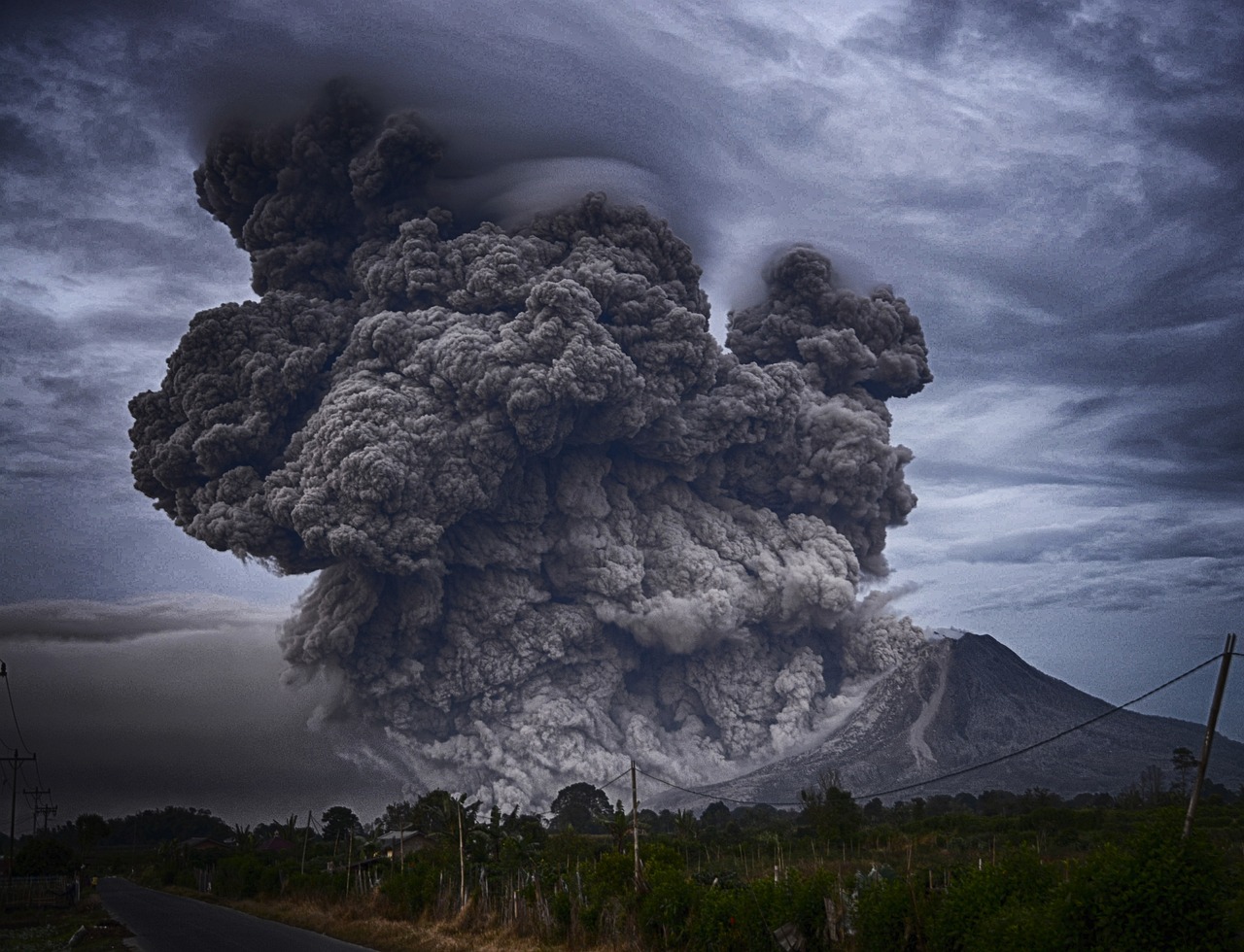
Vocabulary:
I will read the words, meanings, and sample sentences. Then, repeat after me.
- erupt /ih-RUHPT /
- crack /krak/
- extend /ik-STEND/
- measurement /MEZH-er-muhnt/
- prone /prohn/
[verb] – to burst out or explode, especially in terms of a volcano emitting lava.
The volcano erupted suddenly, sending ash and smoke into the sky.
[noun] – a narrow opening or fissure
The earthquake caused a crack to form in the ground.
[verb] – to make something longer or larger; to stretch out
She tried to extend her reach to grab the book from the shelf.
[noun] – the quantitative data collected or observed from specific tools or instruments
Accurate measurements are essential in scientific experiments.
[adjective] – likely or inclined to experience or suffer from a particular condition or situation.
The coastal areas are prone to flooding during heavy rains.
Article reading:
Please read the whole article. Then, I will check your pronunciation and intonation.
On December 19, 2023, a volcano erupted in southwest Iceland, sending out lava and smoke over a large area. The eruption happened after weeks of strong earthquakes, as reported by Iceland’s Meteorological Office. The eruption posed a danger to a nearby town called Grindavik. To keep people safe, authorities evacuated around 4,000 residents from Grindavik and closed the nearby Blue Lagoon geothermal spa, expecting a significant eruption on the Reykjanes peninsula. The eruption started near Grindavik, only a few kilometers away, causing cracks in the ground that extended towards the village, which is about 40 kilometers southwest of Reykjavik. Despite the eruption, Keflavik International Airport in Reykjavik stayed open, but there were many delays for incoming and outgoing flights. Pictures and live videos of the eruption showed molten rock shooting from cracks in the ground, creating bright yellow and orange colors against the night sky.
The Meteorological Office mentioned that seismic activity and GPS measurements suggested the magma was moving southwest, indicating the eruption might continue towards Grindavik. The lava flow was measured at 100 to 200 cubic meters per second, exceeding the amount from previous eruptions in the area. Local police heightened their alert due to potential volcanic activity in Iceland, cautioning people to stay away while emergency crews assessed the situation. The country, situated on tectonic plate boundaries, faces challenges in predicting eruptions despite frequent seismic and volcanic events. In mid-November, Grindavik residents were evacuated due to seismic activity, but it subsided later. The Reykjanes peninsula, prone to eruptions, had notable events in March 2021, August 2022, and July 2023.
The Meteorological Office mentioned that seismic activity and GPS measurements suggested the magma was moving southwest, indicating the eruption might continue towards Grindavik. The lava flow was measured at 100 to 200 cubic meters per second, exceeding the amount from previous eruptions in the area. Local police heightened their alert due to potential volcanic activity in Iceland, cautioning people to stay away while emergency crews assessed the situation. The country, situated on tectonic plate boundaries, faces challenges in predicting eruptions despite frequent seismic and volcanic events. In mid-November, Grindavik residents were evacuated due to seismic activity, but it subsided later. The Reykjanes peninsula, prone to eruptions, had notable events in March 2021, August 2022, and July 2023.
Discussion Questions:
I will read each question. Then, please answer them.
- Have you ever experienced a natural disaster like a volcanic eruption or earthquake? If so, how did it impact your life? If not, have you ever been in a situation where you had to be evacuated for safety reasons?
- Do you live in an area prone to certain natural events, such as earthquakes or floods? How do people in your community prepare for such situations?
- Do you agree that living in areas prone to natural disasters comes with unique challenges?
- Considering the frequency of volcanic activity in Iceland, what measures do you think the government could take to enhance preparedness and minimize the impact on residents?
- How might advancements in technology help in predicting and responding to volcanic eruptions, especially in regions like the Reykjanes peninsula?
Summarization
Please summarize the whole article using your own words and expressions. You will have one minute to prepare before you answer.
Describe:
Please explain the definition of each word listed below based on your understanding. You can provide example sentences if needed.
- village
- mention
- alert
- evacuate
- subside